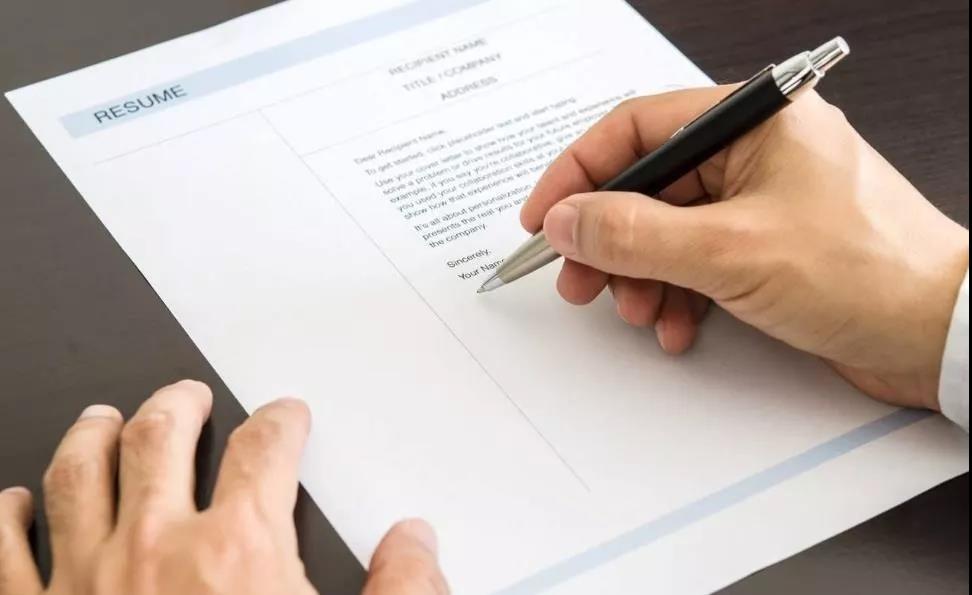Comparison,of,GMO,Safety,Management,Policies,in,Major,Countries,and,Regions
Zhuojing SUN Yaguang DUAN Lu LI Xue LI Feng ZHANG Daoqing XU Wei WANG



Abstract With the rapid development of genetic technology, the application of genetically modified crops has brought revolutionary changes to the global agricultural production and agricultural trade patterns, and has played an important role in ensuring human health, environmental safety and sustainable agricultural development. In order to strengthen genetically modified organisms (GMO) safety management, countries around the world have formulated GMO safety management policies adapted to their own national conditions with reference to internationally accepted practices. In this study, we carried out comparative studies among the United States, the European Union, Japan and other developed countries or regions and China from the aspects of regulations and management institutions, safety evaluation systems, and label management, so as to provide references for the improvement of Chinas GMO safety management policies.
Key words Genetically modified organisms; Safety management; Policy; Comparison
Received: January 2, 2021 Accepted: March 2, 2021
Supported by China Agriculture Research System (CARS-15-36); Agriculture Research System of Rape and Cotton in Anhui Province (AHCARS-04); Team Project of Anhui Academy of Agricultural Sciences (2021YL032).
Zhuojing SUN (1987-), female, P. R. China, agronomist, master, devoted to research about GMO safety management.
*Corresponding author. E-mail: mhswangwei@163.com.
Under the multiple effects of factors such as population expansion, water and soil resource constraints, natural resource destruction and climate change, ensuring the continuous and effective supply of food and important agricultural products has become the top priority of the worlds agricultural science and technology development. The rapid rise of biotechnology with genetic modification as the core makes oriented, accurate and rapid cultivation of fine crop varieties possible, and also provides technical support for greatly reducing the use of pesticides and increasing agricultural productivity[1-3]. In order to avoid the potential risks in the development of genetically modified organisms, countries around the world attach great importance to the safety management of agricultural genetically modified organisms (GMO), and different models of agricultural genetically modified organisms safety management systems have been established in line with national reality according to international practice[4] to standardize the research, development, production, application, and import and export activities of agricultural genetically modified organisms and ensure the safety of agricultural genetically modified organisms. In this study, a comparative analysis of GMO safety management policies in the United States, the European Union, Japan and China from such three aspects as regulatory agencies, safety evaluation systems, and label management was briefly carried out, so as to provide a reference for the improvement of Chinas GMO safety management policies.
GMO safety regulations and regulatory agencies
China
China is a country with stricter GMO safety management in the world, and has realized the management of the whole process of genetic modification. In 2001, the State Council issued the Regulations on the Safety Management of Agricultural Genetically Modified Organisms. The former Ministry of Agriculture and the General Administration of Quality Supervision, Inspection and Quarantine of the Peoples Republic of China successively promulgated a series of laws, regulations, technical rules, and management systems including Administrative Measures on the Safety Evaluation of Agricultural Genetically Modified Organisms, Administrative Measures on the Safety of Import of Agricultural Genetically Modified Organisms, Administrative Measures on the Labeling of Agricultural Genetically Modified Organisms, Approval Measures for Agricultural Genetically Modified Organisms Processing, and Administrative Measures on Inspection and Quarantine of Entry and Exit of Genetically Modified Products, providing a legal basis for Chinas GMO safety management[5].
The United States
The United States is the country with the most developed genetic technology and the largest industrialized area of genetically modified crops in the world. In 1986, the U.S. Cabinet Office of Science and Technology Policy issued the Coordinated Framework for the Regulation of Biotechnology, proposing to conduct GMO safety management under the existing legal framework[6]. Specifically, the safety of genetically modified animals and plants is mainly governed by the Federal Plant Protection Act, the Federal Plant Pest Act, the Federal Phytosanitary Act, the Virus-Serum-Toxin Act, the Federal Meat Management Act, and the Poultry Product Management Act. The safety of genetically modified plants and microbes is regulated by the Federal Insecticide Fungicide & Redenticide Act (FIFRA), the Federal Food, Drug, and Cosmetic Act, etc. The safety of genetically modified foods, feeds, and additives is governed by the Federal Food, Drug, and Cosmetic Act, Fair Packaging and Labeling Act, etc. The safety of GMO experimental research is governed by the Recombinant DNA Molecular Research Guidelines.
The European Union
The EU is a region with stricter GMO safety management, where separate legislation is implemented. The regulatory framework is divided into two levels, of which the first level is for genetically modified organisms. The EU promulgated and implemented the Genetically Modified Organisms (Deliberate Release) Regulations, which was later replaced by Directive 2001/18, which regulates any behavior that may cause genetically modified organisms to contact the environment, including field trials, commercial cultivation, import and marketing of genetically modified organisms and products. The second level is for genetically modified food. On November 17, 2003, the European Union promulgated the Regulations on the Administration of Genetically Modified Food and Feed (1829/2003/EC) and Regulation on Traceability and Labeling of GMOs and Food and Feed Produced from GMOs (1830/2003/EC), which clearly stipulates the establishment of a unified approval and enforcement system for genetically modified food in the European Union and the tracking and labeling system for genetically modified food, respectively[6].
Japan
Japan has separate legislation on the management of genetically modified products, including the Food Sanitation Law, Feed Safety Law, Agricultural Product Standardization Law and Labeling Law and so on. After joining the Cartagena Protocol on Biosafety in 2003, the Japanese Cartagena Law was formulated, involving the environmental safety management of genetically modified organisms[6]. Japan has formulated corresponding management regulations in accordance with the utilization patterns and uses of genetically modified organisms.
ChinaAgricultural administrative department of the state councilMinistry of Agriculture and Rural Affairs Responsible for the supervision and management of the safety of agricultural genetically modified organisms nationwide.
The United StatesDepartment of Agriculture, Environmental Protection Agency, Food and Drug AdministrationDepartment of Agriculture (USDA) Responsible for supervising the cultivation, import and transportation of genetically modified plants.
Environmental Protection Agency (EPA) Responsible for the supervision of the insecticidal properties of genetically modified crops and their impact on the environment and people. The focus of supervision is to supervise the insecticidal or the microbicidal ingredients contained in genetically modified crops.
Food and Drug Administration (FDA) Responsible for supervising the safety of genetically modified biological products in food, feed and medicine.
National Institutes of Health (NIH) Responsible for supervising the safety of genetically modified organisms in the laboratory.
The EuropeanUnionEuropean CommissionEU Council The European Council is the highest authority of the European Union and makes major decisions regarding EU legislation and policies.
Commission of European Union In accordance with the recommendations of the Council of the European Union, various laws and regulations are formulated to conduct risk assessment on the safety of genetically modified organisms.
European Food Safety Agency (EFSA) Each member country appoints its own management authority Each member country formulates its own biosafety management laws and designates regulatory authorities in accordance with the laws of the European Union.
JapanMinistry of Education, Culture, Sports, Science and Technology, Ministry of Agriculture, Forestry and Fisheries and Ministry of Health, Labor and WelfareMinistry of Education, Culture, Sports, Science and Technology, Ministry of Agriculture, Forestry and Fisheries and Ministry of Health, Labor and Welfare The Ministry of Education, Culture, Sports, Science and Technology is responsible for approving research and development of genetically modified organisms; the Ministry of Agriculture, Forestry and Fisheries is responsible for the environmental safety assessment of genetically modified organisms and the safety assessment of feed; the Ministry of Health, Labor and Welfare is responsible for the safety evaluation of genetically modified foods.
Evaluation of GMO Safety
China
China implements a hierarchical and staged safety evaluation system for agricultural genetically modified organisms. Safety evaluation is the core of agricultural genetically modified organisms safety management. It is to determine whether each specific genetically modified organism has potential adverse effects through scientific analysis of various scientific resources, and to predict the characteristics and extent of the adverse effects. The National Agricultural GMO Safety Committee is responsible for the safety evaluation of agricultural GMOs. The entire evaluation process is composed of four parts: hazard identification, hazard feature description, exposure assessment and risk feature description, and the damage of agricultural genetically modified organisms at a given level of exposure is predicted through safety evaluation as a basis for management decision-making.
The United States
The U.S. Department of Agriculture, Environmental Protection Agency, and Food and Drug Administration have established their own safety evaluation systems under the existing regulatory framework, namely the approval system for genetically modified crop field trials, the genetically modified plant pesticide registration system, and the genetically modified food voluntary consultation system[6]. The Department of Agriculture focuses on assessing the risks of genetically modified organisms to agriculture and the environment, and implements notification and licensing procedures for the release of genetically modified organisms according to the level of risk. Any genetically modified organisms can apply for non-regulated status, and the non-regulated status of genetically modified organisms is no longer subject to the regulation of the Introduction of Genetically Modified Organisms and Products That are Plant Pests or Have Reasons to be Considered as Plant Pests. The Environmental Protection Agency will adopt the same model as conventional pesticides to manage GMO pesticides. Compared with conventional pesticides, GMO pesticides require less data and shorter review time. The Food and Drug Administration established a voluntary consultation system for genetically modified foods, in which product safety is the responsibility of the researcher and manufacturer. The researcher can consult the safety of genetically modified products before the product is put on the market, and obtain the food safety permit from the Food and Drug Administration after submitting relevant information.
The European Union
The EU requires genetically modified foods to undergo strict risk assessment before they are imported and marketed. The EU requires that the applicant must submit an application to the government department of the country where the product is to be released, and the host country will submit the assessment report to the European Commission within 90 d. The EU Commission usually makes a risk assessment of the application within 6 months, and submits a written assessment after publicly accepting public comments. The EU Commission will draft the first draft of the approval resolution on this basis, and the Food and Animal Health Special Committee composed of representatives of the member states will vote on it. If the majority of votes are in favor, it means that it is passed; and if it is against, the draft resolution will be submitted to the EU Ministerial Conference for voting[7-8].
Japan
The first type of use refers to the use of genetically modified organisms without any airtight measures, including direct use in food, feed and processing. The users must submit the biodiversity risk assessment report and related application to the relevant department, and can use it only after being approved by the competent department. The second type of use means that when genetically modified organisms have airtight measures, users must adopt airtight measures and be approved by relevant departments[6]. In addition, the food safety of genetically modified organisms is evaluated by the Ministry of Health and Welfare and the Food Safety Committee of the Cabinet Office, and the food safety of genetically modified organisms is evaluated by the Ministry of Agriculture, Forestry and Fisheries and the Food Safety Committee of the Cabinet Office.
Zhuojing SUN et al. Comparison of GMO Safety Management Policies in Major Countries and Regions
Management of GMO Labeling
China
According to the Administrative Measures for the Labeling of Agricultural Genetically Modified Organisms, 17 products of 5 categories are labeled according to the catalog, and as long as the products containing genetically modified ingredients listed in the catalog must be labeled[9]. Products excluded in the catalog can be marked voluntarily.
The United States
Before 2016, the United States adopted voluntary labeling of genetically modified products. The National Bioengineered Food Disclosure Standard issued in July 2016 unified the labeling method of genetically modified food[9]. In December 2018, the U.S. Department of Agriculture issued the final version of the regulations on the labeling of genetically modified foods, requiring that from January 1, 2020, foods containing more than 5% of genetically modified ingredients should be labeled with genetic modification information in an appropriate manner.
The European Union
The EU stipulates that food and feed containing genetically modified ingredients and food and feed produced from genetically modified raw materials should be labeled. When the content of genetically modified ingredients contained in a product is less than 0.9% (1% before 2003), it may not be labeled.
Japan
Japan implements a mandatory labeling system for genetically modified organisms in accordance with the catalog. For 33 products in the labeling catalog, if the genetically modified ingredients exceed the 5% threshold, they must be labeled for genetically modified organisms[9]. After genetically modified organisms are processed, products that no longer contain recombinant DNA or protein shall be labeled voluntarily.
CountrySafety evaluation stageSafety evaluation objectScope of safetycertificateAre the compoundcharacters required tobe evaluated for safety?Is the entire process requiredto be managed?
ChinaIncluding 5 stages of experimental research, intermediate test, environmental release, production test and safety certificate application, which can be simplified depending on the individual case.Plants, animals, microorganisms and their products with genomes changed by genetic engineering technology, for use in agricultural production or processing of agricultural products.Within designated areaRequiredImplementing the whole process management from research, experiment, production, processing to operation, import and export.
The UnitedStatesThe U.S. Department of Agriculture, Environmental Protection Agency, and Food and Drug Administration have established their own safety evaluation systems under the existing legal framework, namely the approval system for genetically modified crop field trials, the genetically modified plant pesticide registration system, and the genetically modified food voluntary consultation system.Evaluating in units of transformation eventsNationwide NotGenerally, the safety management of genetically modified organisms is a non-whole-process management; for genetically modified organisms with their nutritional components changed, they are required to be labeled when they are put on the market, but only the changes in nutritional components are required to be labeled, which can be considered as a whole process management; and for medicinal and industrial genetically modified organisms, the supervision is not relieved, and the whole process is managed.
The EuropeanUnionImport approval does not require experiment evaluation.All products derived from genetically modified organisms or products containing genetically modified ingredientsImport approval applies to the entire EU, and cultivation approval applies to countriesRequiredWhole process management
JapanField trials in isolation, food, feed and processing cultivation, and cultivation trials in an open environment.Three approvals: food safety evaluation; feed safety evaluation; environmental safety evaluationNationwideFood: Mandatory, but only a simple review of the transformed parts.Feed: voluntary. Environment: Mandatory, but only by simple means.Whole process management
ChinaMandatory labelingNo labeling thresholds have been setIncluding 17 kinds of genetically modified products in 5 categories, involving soybean, corn, cotton, rape, and tomato.
The United StatesBefore 2016, the United States adopted voluntary labeling of genetically modified products.
From January 1, 2020, foods containing more than 5% of genetically modified ingredients should be labeled with genetically modified product information in an appropriate manner.Quantitative (5%)No
The European UnionMandatory labelingQuantitative (0.9%)No
JapanMandatory labeling of genetically modified productsQuantitative (5%)A total of 33 products need to be marked. After genetically modified organisms are processed, products that no longer contain recombinant DNA or protein are labeled voluntarily.
Conclusions
Since the promulgation and implementation of the Regulations on the Safety Management of Agricultural Genetically Modified Organisms in 2001, China has successively promulgated 5 measures and a series of guidelines, standards and regulations covering the entire process of research and development, production, processing, operation, import and export. Such a complete GMO safety management system has played a vital role in ensuring safety and promoting the development of GMO industry. With the changes of technological development and industrial demand, Chinas GMO safety management policies also need to be adjusted, and the comparative analysis of the changes and trends of GMO safety management policies of major countries in the world is of great significance to the continuous optimization of Chinas GMO safety management.
References
[1] GUO SJ, XU ZG, HUANG JH. Research on the potential benefits of the application of genetic technology: Based on field investigations in five provinces of China[J]. Journal of Agrotechnical Economics, 2012(1): 22-28. (in Chinese)
[2] HUANG J, ROZELLE S, PRAY C, et al. Plant biotechnology in China[J]. Science, 2002(25): 674-677.
[3] ZHANG QF. Vigorously develop genetically modified crops[J]. Journal of Huazhong Agricultural University: Social Sciences Edition, 2010(1):1-6. (in Chinese)
[4] LI N, FU ZW, LIU PL, et al. Comparing of administration policy of main countries on GMOs[J]. Management of Agricultural Science and Technology, 2010, 29(1): 1-6. (in Chinese)
[5] XU LJ, WU XZ, LIU PL. General situation of safety management of agricultural genetically modified organisms in China[C]//Danone Nutrition Centers 2019 Paper Collection: Genetically Modified Food and Safety. Chinese Center for Disease Control and Prevention, Danone Nutrition Center, 2019. (in Chinese)
[6] LI WL, XU LJ, SONG GW. General situation of safety management of agricultural genetically modified organisms in major countries in the world[C]//Danone Nutrition Centers 2019 Paper Collection: Genetically Modified Food and Safety. Chinese Center for Disease Control and Prevention, Danone Nutrition Center, 2019. (in Chinese)
[7] JAMES C. Brief 52: Global Status of CommercializedBiotech/GM Crops: 2016.2016. Available on:http://www. isaaa. org/resources/publications/briefs/52/down-load/isaaa-brief-52-2016. pdf.
[8] BROOKES G, BARFOOT P. Environmental impacts of genetically modified(GM) crop use 1996-2015: Impacts on pesticide use and carbon emissions[J].GM Crops & Food, 2017, 8(2): 117-147.
[9] XU LJ, LIU PL, LI WL, et al. Analysis of the recent trends of international labeling policies for genetically modified products and the enlightenment to Chinas labeling management[J]. China Biotechnology, 2018, 38(9): 94-98. (in Chinese)
Editor: Yingzhi GUANG Proofreader: Xinxiu ZHU






